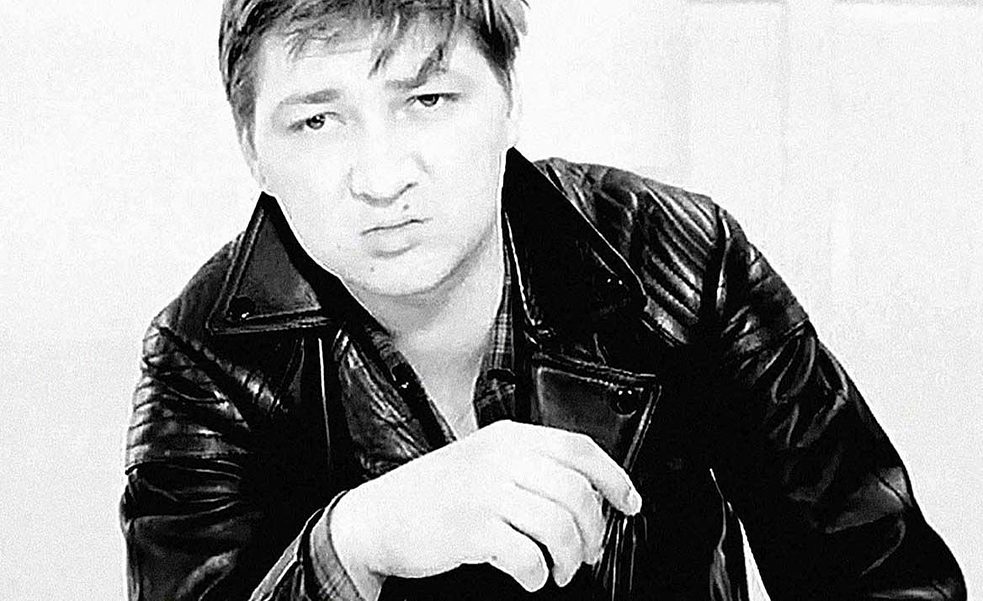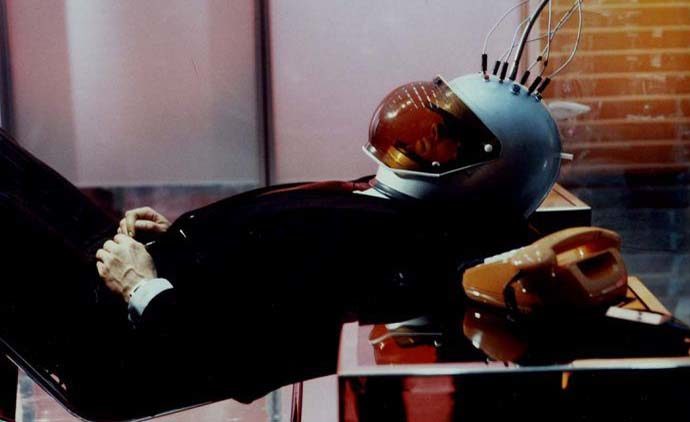QAGOMA
Retrospective: Watching Fassbinder, watching Germany

For cinephiles, it’s impossible to spend time in Germany without thinking about Rainer Werner Fassbinder. In Berlin alone, his name adorns Potsdamer Platz’s Boulevard of the Stars, and he features heavily in the nearby Deutsche Kinemathek’s Museum of Film and Television. Walking through Alexanderplatz, Fassbinder’s ‘Berlin Alexanderplatz’ obviously springs to mind. Even contemplating a trip to his home city of Munich, where he made a significant portion of his work, much of his output does as well.
More than chronicling specific locations, however, Fassbinder’s films helped shape the way many movie lovers see the country. In everything from contemporary dramas to period musings, films shot in two weeks to landmark TV mini-series, and futuristic science fiction to autobiographical slices of life, the prolific talent captured the nation’s pulse, spirit and everyday reality. Accordingly, just as visiting Germany conjures thoughts of the director, writer and actor and his work, watching his films immerses viewers in his vision of his homeland. And, when a retrospective dedicated to Fassbinder graces cinema screens in Brisbane, it brings a piece of the country to Australia.
A sizeable array of content
As a result, in a two-part program spread over 2017 and 2018, the sights, sounds and spirit of the European nation take over the Gallery of Modern Art’s Australian Cinematheque for the first major showcase of Fassbinder’s career to be staged in Australia. With his roles on- and off-screen plentiful during his brief but busy run, the selection of titles spans not only his own efforts, but others he starred in, plus works based on his plays. Given that Fassbinder helmed 39 films — including six television movies and series — and four video productions in the 17 years before his death in 1982 at the age of 37, directed 24 stage plays and four radio plays as well, and did everything from act, shoot, compose and edit to design, produce and manage across his chosen art forms, the retrospective has a sizeable array of content to choose from.Complex blend
In a lineup filled with highlights that includes hits and deeper cuts alike — though, in Fassbinder’s filmography, there’s no such thing as an easy entry. Every screening boasts a complex blend of his observational, thematic and stylistic bravura, whether offering audiences obvious titles such as his breakout international hit Fear Eats the Soul, which was made as a filmmaking exercise, or diving into fare such as Whity, the gothic western shot on Sergio Leone's sets. Acclaimed efforts that have become synonymous with the heights of his career, such as the Berlinale-winning Veronika Voss, the commercially successful The Marriage of Maria Braun and his final feature Querelle, all sit alongside the Nosferatu-nodding Tenderness of the Wolves, the vulgar comedy of Satan’s Brew, and Lola, his reworking of Joseph von Sternberg's Marlene Dietrich-starring The Blue Angel. Fassbinder 2015 / Director: Annekatrin Hendel
| © It-Works GMBH via GOMA
Fassbinder 2015 / Director: Annekatrin Hendel
| © It-Works GMBH via GOMA
Television work gets cinematic outing
While the list of features continues, GOMA’s retrospective crucially gives Fassbinder’s television work a cinematic outing. Long before the concept of peak TV or the so-called golden age of television, the German auteur moved between screens big and small with ease — and made his mark on the home-viewing medium. Both Eight Hours Do Not Make a Day and Berlin Alexanderplatz screen in multi-day presentations, equally conveying their episodic initial presentation and recognising their existence as extended pieces with a singular, movie-like vision. World on a Wire also fits into this category, its two parts shown in one sitting.
 Production still from Welt am Draht (World on a Wire) 1973
| Image courtesy: Rainer Werner Fassbinder Foundation via GOMA
Indeed, immersion is the best option when it comes to appreciating, understanding and exploring a filmmaker like Fassbinder. That’s hardly surprising; a figure known for throwing himself into his artistic passions should inspire the same response in his viewers. A survey of his performances in features directed by others, including his last screen appearance in Wolf Gremm’s cyberpunk thriller Kamikaze '89, helps steep audiences in every facet of his talent. François Ozon’s adaptation of Water Drops on Burning Rocks, made in 2000 from an unproduced Fassbinder play, has the same effect.
Production still from Welt am Draht (World on a Wire) 1973
| Image courtesy: Rainer Werner Fassbinder Foundation via GOMA
Indeed, immersion is the best option when it comes to appreciating, understanding and exploring a filmmaker like Fassbinder. That’s hardly surprising; a figure known for throwing himself into his artistic passions should inspire the same response in his viewers. A survey of his performances in features directed by others, including his last screen appearance in Wolf Gremm’s cyberpunk thriller Kamikaze '89, helps steep audiences in every facet of his talent. François Ozon’s adaptation of Water Drops on Burning Rocks, made in 2000 from an unproduced Fassbinder play, has the same effect.
So too does the program’s documentary contingent, examining, contextualising, probing and peering deeper into his films, their impact, his lasting influence and his legacy. Fassbinder: To Love Without Demand takes the personal essay approach, using interviews with Fassbinder from the 1970s, in what proves an illumination compilation, while Rainer Werner Fassbinder also benefits from archival chats. Elsewhere, Love, Life and Celluloid draws upon those who knew him to share their thoughts and recollections, as does Fassbinder, which was commissioned to celebrate what would’ve been his 70th birthday.
Rainer Werner Fassbinder screens at Brisbane’s Gallery of Modern Art from October 14 to November 15, 2017, and from June 1 to July 4, 2018.